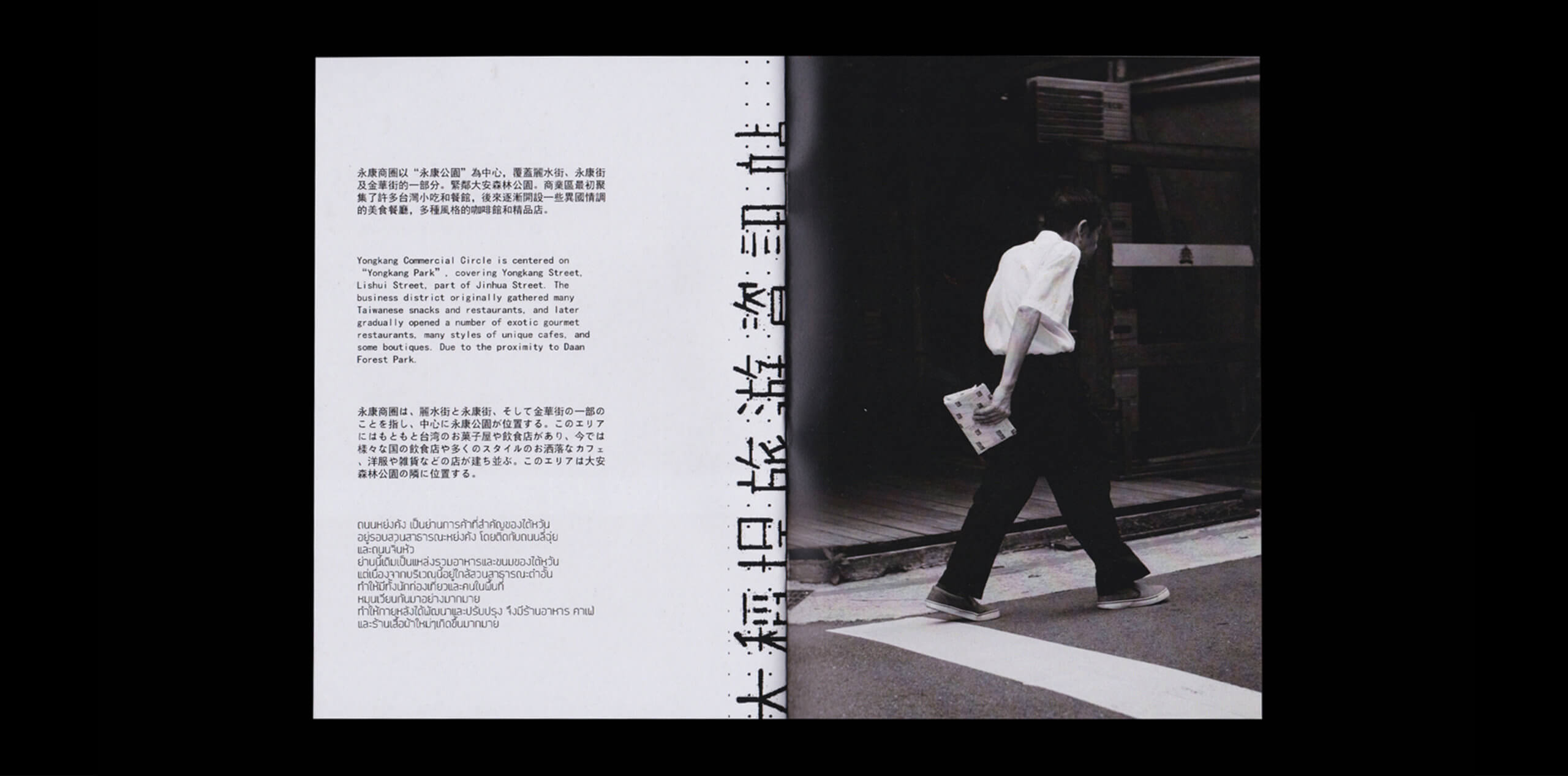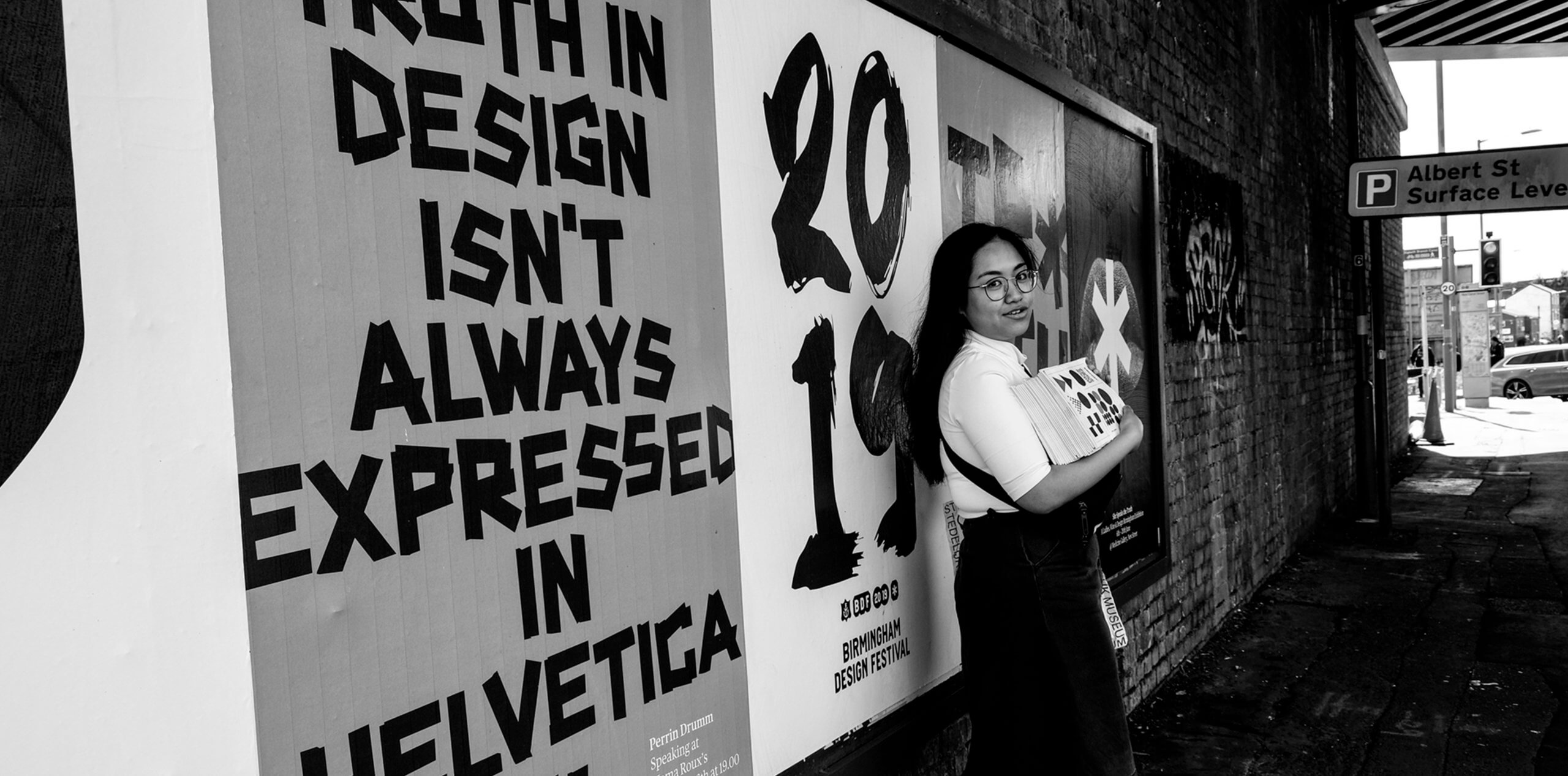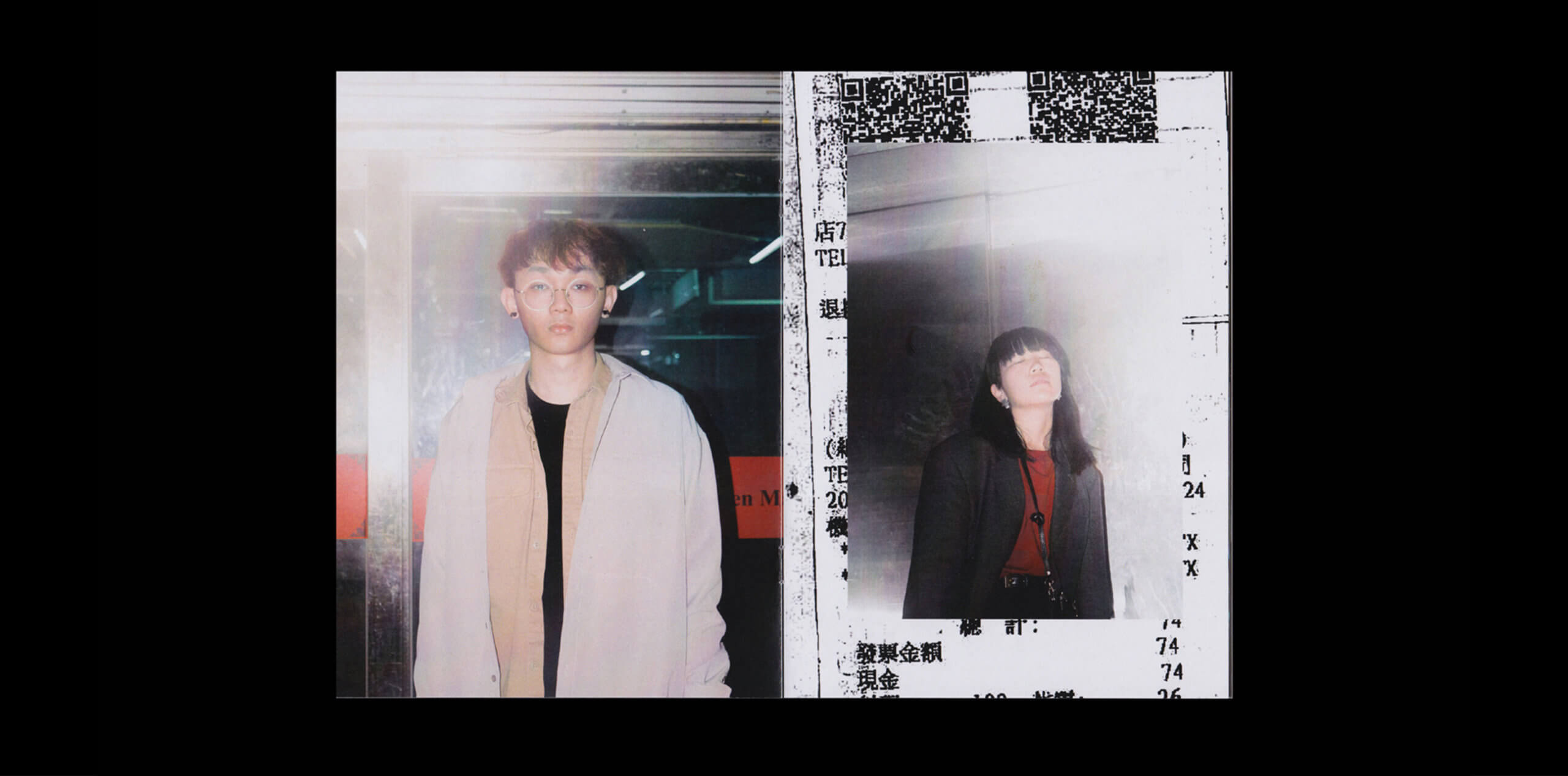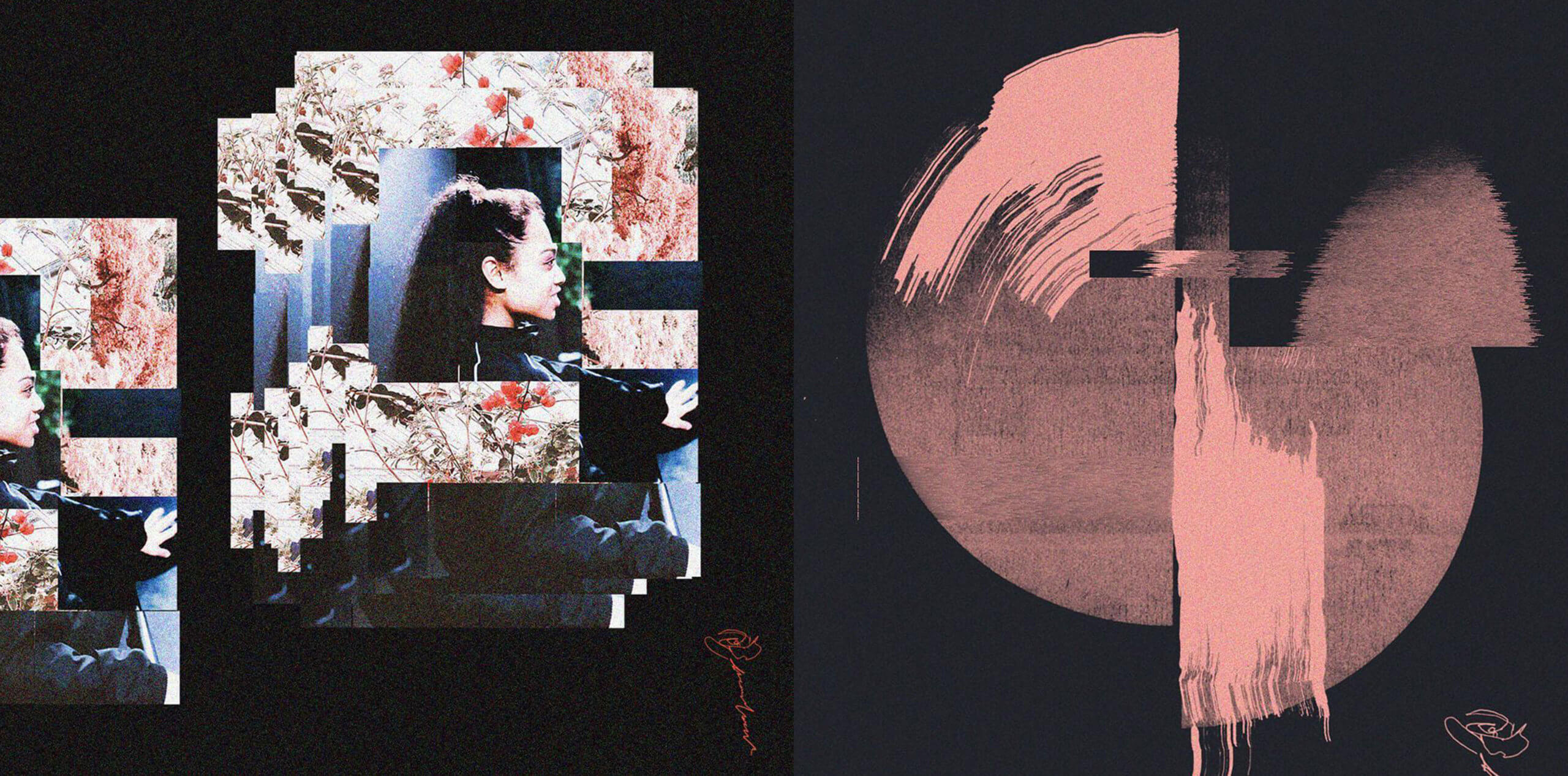Nicole Abenoja is passionate about designing for communities that make a difference. She’s part of The Lakambini, a youth organisation run by young Filipinas to educate others about Filipino culture and womanhood, where content is created through a collaboration between creatives and writers. Nicole also created the brand identity for Be Free Campaign, a charity that works with schools, universities and communities to demolish the stigma surrounding mental health, and currently volunteers her skills by helping them create design visuals for social media and marketing collateral.
Being naturally curious and analytical, Nicole likes to dig deeper into a subject matter to find inspiration and tell the story behind the design: “When people look at design work, they tend to only see it at face value so a lot of the behind the scenes get lost in translation…For me, I like adding narrative to my work so the audience can understand how I arrived at the final piece and the emotions I felt at the time.” This can be seen throughout her vivid and expressive style, where her emotions shine through her work to reflect her personal response to the brief.
Nicole graduated from Birmingham City University in 2019 with a BA in Graphic Communication. Whilst studying, she travelled to Taipei and took part in ImaginAsia 2018, an international collaboration with universities in Asia. This brings creative students from all over Asia together to work on a project and as Nicole tells us the experience was one of the most fun projects she has ever worked on. She said: “It covered my love of adventure and language, and the best part was that it was challenging. In the beginning, we were strangers in a different country and by the end of week we overcame language barriers and insecurities, and became a functional creative team.”
She also completed a six-month Erasmus Exchange Programme with Willem de Koonig Academy in Rotterdam, The Netherlands. It was an immersive process for her and experiencing design in another country and culture has fuelled her passion to want to study a masters abroad to explore design in other cultural contexts.
Nicole’s work stands out as being different from more commercial portfolios and has been recognised by industry professionals. Featured in Birmingham Design Festival 2019, her typeface True Brush created using brush typography to represent the theme of ‘Truth’ within artistic materials, was chosen by co-director Luke Tonge. It was used as the official Graphic District typeface and formed part of the visual identity across all the festival’s campaign collateral, ranging from digital ads and posters to merchandise.
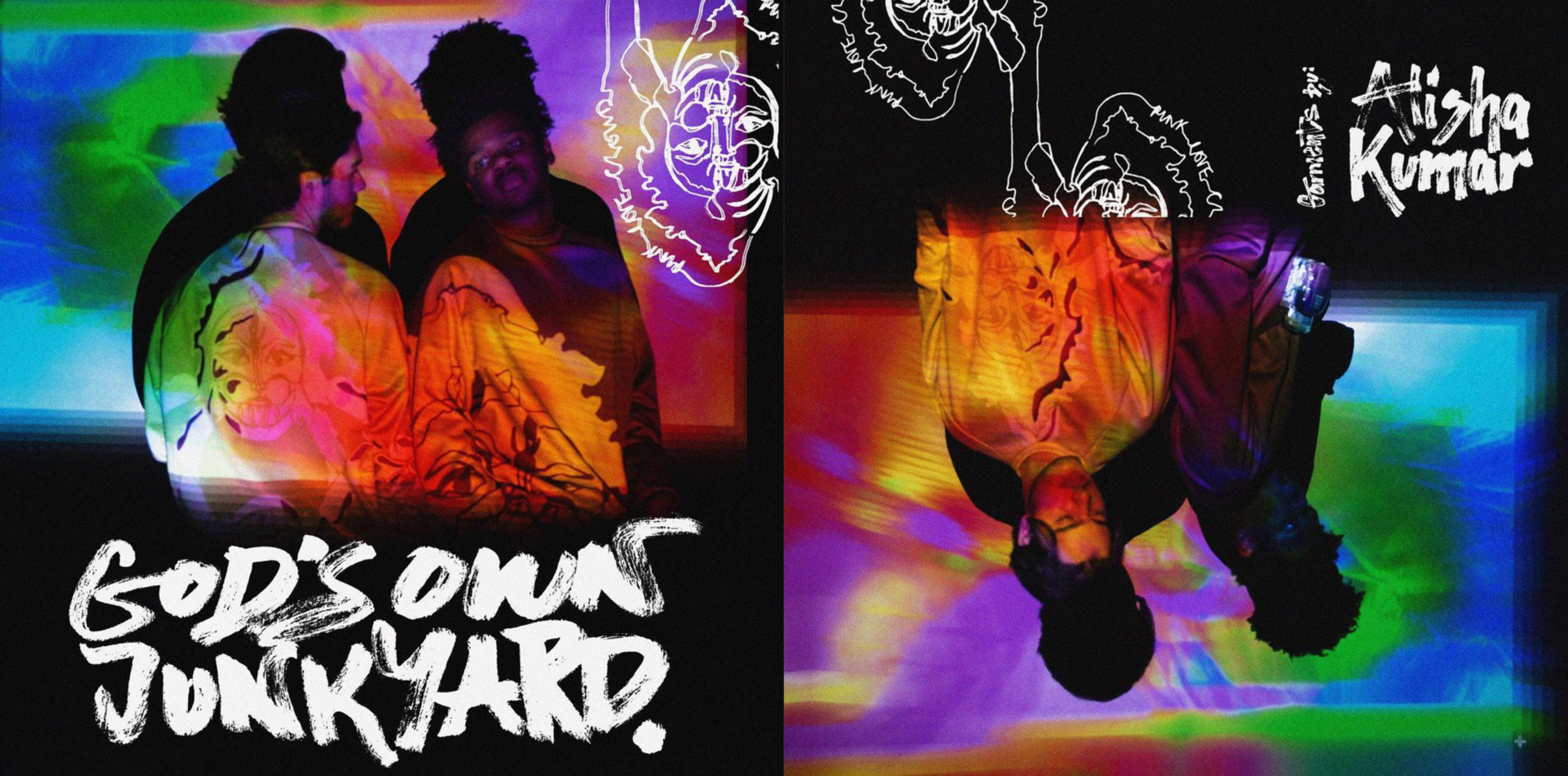
We caught up with Nicole to find out more about her experiences studying abroad and her passion for working on projects for charities and causes she believes in.
Why did you decide to become a designer and how has that evolved over time?
I was always the artsy kid who would buy all sorts of books and stationery rather than the latest gadgets and toys. But I never intended to pursue design as a career until my very first graphic communication class back at college. I remember our teacher passionately introducing us to what ‘Graphic Design’ is and how it has shaped everyday life, from things we see around us to how you communicate your ideas to others.
I never knew or even realised how much of an impact the creative community has on society. I was initially annoyed at myself for not taking the time to learn more about the design industry so I could have challenged the cons I’d been told about, especially because being creative is something I’m good at and makes me happy.
Every day since then, I’ve made it a personal mission to be simply curious. It’s encouraged me to learn, to play and to love my mistakes because I know there’s always a solution to every problem.
Where did you study and what do you know now that you wish you’d known when you started your design course?
I initially studied design at Wyggeston & Queen Elizabeth I College, then I completed a foundation degree at De Montfort University and graduated with my bachelor’s degree from Birmingham City University. I also did an Erasmus Exchange Programme with Willem de Kooning Academy in Rotterdam, The Netherlands.
A fun observation that I learned and perhaps only creatives themselves know about, is that your individual creative style really does represent your inner persona. It’s not something that’s obvious to you until it’s pointed out by others and it’s something I love about being part of the creative community, as everyone appreciates each other’s uniqueness.
I wished I’d known this earlier because I never noticed how tight-knit creative communities can be. I had this fear that designers were super competitive, but actually everyone’s very supportive of one another. It warms my heart that our creative community is very empathetic.
Can you tell us bit more about your experiences on the Erasmus Exchange programme?
My six months at the Willem de Kooning Academy in Rotterdam was amazing; they really push you – there’s a saying in The Netherlands: ‘Amsterdam is where you party and Rotterdam is where you work’. They have a very strong work ethic and disciplined mentality in The Netherlands. In the UK there’s more independent study and you attend university two to three days a week, whereas in Rotterdam students are in every day. It was a lot of work but really interesting because they offered a range of different classes. It helped with my studies when I returned to the UK, especially with the research for my dissertation. It was more theoretical teaching over there, which included written work, critical thinking activities and a social and cultural master class programme.
How have you grown over time and developed throughout your education and career so far?
One of the main things I say to myself when working is, “Are you having fun?” Whether it’s a yes or a no, I give myself time to step back to understand my emotions. A creative career can be daunting when you suppress your feelings on a project. I like to analyse my personal response to what I’m working on in order to learn from it.
Non-glamorous commercial projects can be demoralising at times, when there are other ideas or creative directions you want to take but are restricted by client constraints. I make sure I put time aside for my own personal projects and collaborations so I can feed my abstract creativity and always be creating work that means something to me.
Your projects are often telling a story or have an emotional context, is this emotion a conscious intention or your natural way of working?
Some of my projects are an emotional response to subject matter, often music and dance. I come from a fine arts background, so I also try to understand the theory or concept behind everything and communicate a story. I like to research deeper into the concept behind a project brief because I’m analytical and curious, and like to let the audience know what I’ve learnt or discovered.
When non-designers look at design work, they tend to only see it at face value – they don’t know the story behind it and the work that’s been put into the creative process. I like to add narrative to my work and express emotion, so that the viewer can understand how and why I came to the outcome.
You do a lot of work with charities – can you tell us a bit about your experiences?
I do voluntary work for the Be Free Campaign a mental health charity, where they go into schools to teach children about the importance of mental health and demolish the stigma surrounding the issue. I created the branding, logo and social media graphics, as well as helping to generate new ideas.
Working on campaigns for a movement or cause that you believe in means you really understand the audience and their purpose. It also less restrictive, allowing you to come up with more experimental work and develop concepts on how to relay their message.
What is the Lakamibini project and why is it important to you?
The Lakamibini is a youth organisation run by young Filipinas to educate others about Filipino culture and womanhood. The content is created through a collaboration between creatives and writers, and addresses the issues Filipinas face.
Every month they try to address seasonal topics and volunteers are given a list of subjects to choose from to contribute to. Then Filipino writers or creatives volunteer or work in collaboration to produce infographics, depending on what’s required.
This month we’re fundraising for a charity that helps indigenous women in the Philippines through the power of supporters that we have from our social media following. I’m currently on the team who are making a free digital zine to raise awareness of unrealistic and toxic beauty standards that plagues society.
Is the Filipino community one in which women have traditionally been treated an inferior to men, or is it more equal?
It’s more equal. I read that apparently most of the time women are allowed to be like warriors and men can be women, and no one will care. RuPaul has normalised it in the West through commercial means. We’re free to be ourselves, very free people.
I don’t feel like I’ve been treated differently as a woman. I believe in the strength of the Filipino community, where women are heard and free to show their personality outside of western gender stereotypes. They’re famous for being badass and feisty women, free to challenge things and express their opinions. In my educational experiences so far, I’ve been lucky that I haven’t experienced any form of gender discrimination – I don’t see being female as any form of disadvantage. If I ever do come across someone who tries to label me as second-class, then I feel for them as they’re living in the past. For me, being present and looking forward to the future is how I like to go about things.
What top tips would you give to current design students or women considering a career in the design industry?
Tip 1 – Never be afraid to be yourself. Don’t be a sheep in the herd when our creative practice was meant to praise uniqueness.
Tip 2 – Cultivate your mana. Mana is energy and it can come from anywhere. Find a quirk that gives you an outburst of positive stamina and make use of it.
Tip 3 – Always challenge yourself. Make sure every day your present self knows more, does more and can go through more.
Where do you see yourself in five years?
I hope to have completed my master’s degree abroad because I love experiencing communication in new real-life spaces. Adapting to a new culture and spoken language would be a highlight because I have a love of languages and adventure.
Where do you think the design industry is heading in the next ten years and how will you adapt?
I believe the design industry is evolving to this playful hybrid medium. Just as modern technology is establishing a well-reflected functionality of traditional means and vice versa, the two will eventually cohabitate to form a new and recognisable art form.
In order to survive in this creative hypothesis, I feel designers would benefit from being fluent in coding and be a master at the more traditional design methods. It’s the era to be multifunctional; as we grow in comfort with automation, we will have the urge to learn and discover the historical practice.
Name your top five female creative crushes currently working in the industry.
- Sha’an d’Anthes @furrylittlepeach
- Jasmina Zonić @jasminazornic_design
- Hattie Stewart @hattiestewart
- Shivani Parasnis @shivaniparisnis
- Inès Davodeau @ines__dv

